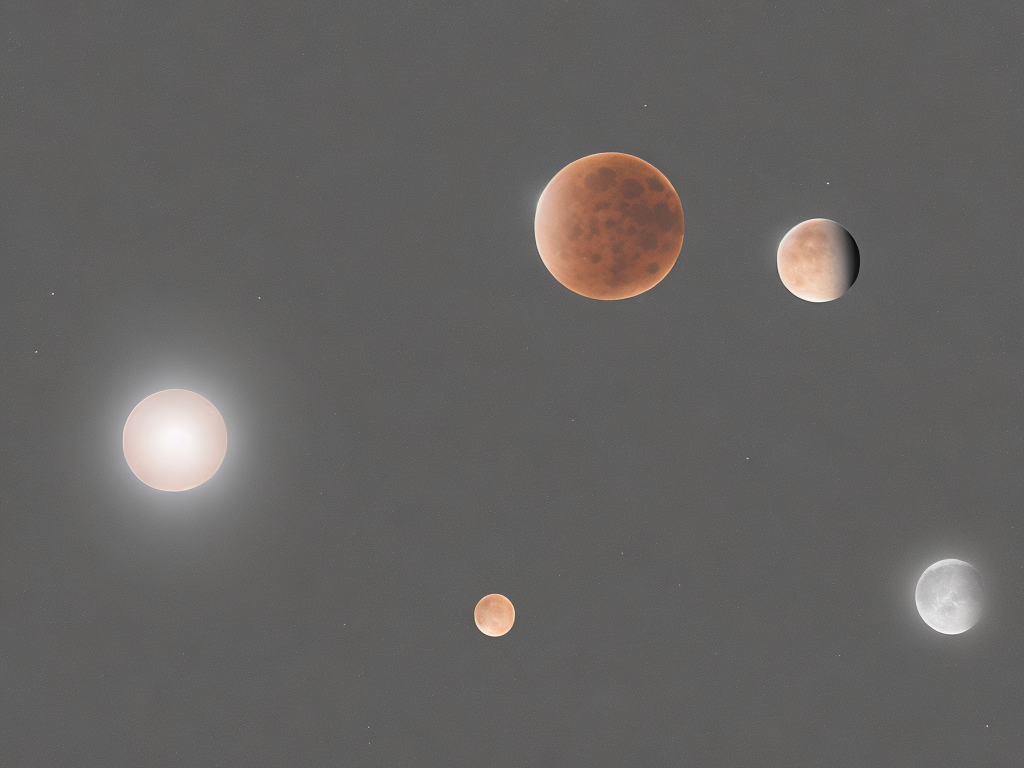
Eclipses are rare natural phenomena that occur when either the moon or the sun passes behind the other, resulting in a temporary darkness on the Earth’s surface. Both lunar and solar eclipses have some similarities, but they also have various differences that set them apart. In this article, we will discuss the major differences between solar and lunar eclipses.
Lunar Eclipse
A lunar eclipse happens when the Earth passes between the sun and the moon, casting a shadow on the moon’s surface. This results in a reddish or copper-colored moon, hence the term, “blood moon”. Lunar eclipses occur roughly twice a year and are visible from anywhere on the night side of the Earth facing the moon. A lunar eclipse can last for several hours, and it may be classified as either partial or total.
A partial lunar eclipse occurs when the Earth’s shadow partially covers the moon, whereas a total lunar eclipse happens when the Earth’s shadow entirely covers the moon. During a total lunar eclipse, the moon appears to be entirely red or copper-colored, and this is because of a phenomenon known as Rayleigh scattering. This is when the Earth’s atmosphere scatters light entering from the sun, with blue light scattering more compared to the red light, thus creating the distinctive red hue on the moon.
Solar Eclipse
In contrast, a solar eclipse happens when the moon passes between the sun and the Earth, causing the sun to be temporarily blocked. Depending on the position of the moon, the total eclipse will not be visible from all parts of the Earth. A solar eclipse is much rarer than a lunar eclipse, happening about twice a year, and the path of the total eclipse is only a few tens of miles wide.
There are four types of solar eclipse: partial, annular, total, and hybrid. A partial solar eclipse occurs when the moon blocks only a portion of the sun, whereas an annular solar eclipse happens when the moon is at its farthest distance from the Earth and thus appears smaller than the sun. This leaves a ring of light around the sun from the corona, hence the name annular, which means “ring-like”.
A total solar eclipse occurs when the moon completely covers the sun, resulting in a temporary darkness on Earth’s surface. During a total solar eclipse, the sun’s chromosphere, and corona appear to be visible to the naked eye. A hybrid solar eclipse happens when the same eclipse changes from an annular solar eclipse to a total solar eclipse while still in progress.
Difference between Lunar and Solar Eclipse
One of the main differences between lunar and solar eclipses is the frequency with which they occur. Lunar eclipses happen about twice a year while solar eclipses happen about twice a year but are rarer.
Another significant difference is that lunar eclipses are visible from anywhere on the night side of the Earth, while the occurrence of a solar eclipse is only visible within a limited path that is usually only tens of miles wide. This means that for a person to witness a solar eclipse, they must be at the right place at the right time.
The main difference between the two types of eclipses is the location of the sun, moon, and Earth during the eclipse. During a lunar eclipse, the Earth is between the sun and the moon, whereas during a solar eclipse, the moon is between the sun and Earth. The moon’s shadow hits the Earth during a solar eclipse, while the Earth’s shadow is responsible for the moon’s visibility during a lunar eclipse.
Another significant difference between the two eclipses is their appearance. Lunar eclipses make the moon appear red or copper-colored, while solar eclipses create a temporary darkness on the Earth’s surface.
In summary, while both lunar and solar eclipses are fascinating celestial events that capture the world’s attention, they have some significant differences that set them apart. While lunar eclipses happen about twice a year and can be seen from anywhere on the night side of the Earth, solar eclipses happen less frequently and are restricted to a limited path. The appearance of the two eclipses is also different, with lunar eclipses making the moon appear red, while solar eclipses lead to temporary darkness on Earth’s surface.
 Self-Instruct
Self-Instruct